6 tips for crafting high-converting PPC landing pages in SaaS
Are you struggling to create high-converting PPC landing pages for your SaaS?
You are not alone.
Crafting compelling copy, designing impactful visuals, and structuring the perfect Google Ads landing page can be time-consuming and requires specialized expertise. You keep losing opportunities and wasting money.
The good news? Getting the page fundamentals right will instantly lift your copy and design – improving the small details can honestly wait.
In this blog post, I’ll share actionable examples and best practices you can implement straight away. Instead of full landing pages, each with its strengths and flaws, I’ve selected the best elements from over a hundred Google Ads landing pages – showing you how and why they drive conversions.
6 best practices for SaaS PPC landing pages
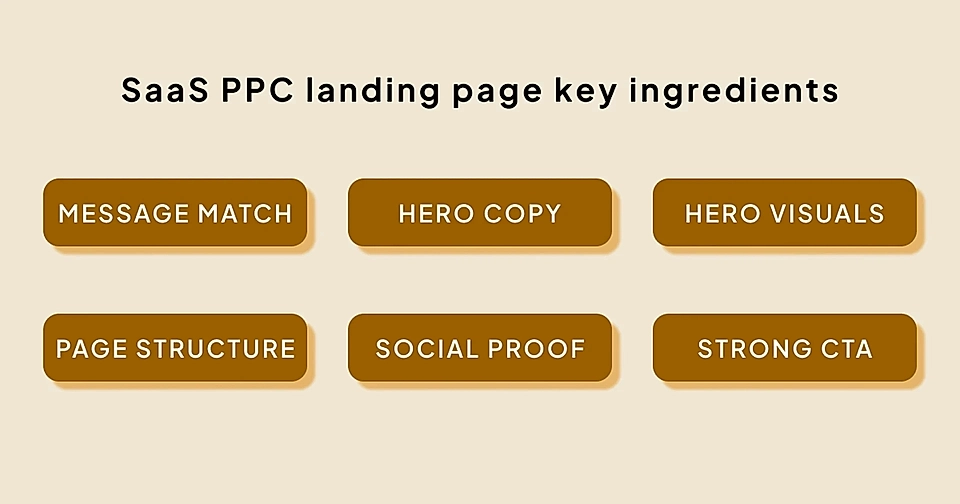
A great landing page answers the phrase your lead typed into Google’s search box but also guides them towards the next action. Depending on your goal, it might be a visit to another page, booking a demo, or signing up for a free trial.
Regardless of the goal, the same principles of what makes a great SaaS landing page apply.
Here are six best practices for SaaS PPC landing pages:
- Ensure the perfect ad and landing page message match.
- Craft an actionable hero copy to tell what your SaaS does and why it matters.
- Use visuals in hero to show your product in action.
- Build an optimal landing page structure with the PAS or AIDA copywriting formula.
- Add social proof to build credibility and convince users.
- Finish with a CTA element to reinforce benefits and tell why to act now.
1. Ensure the perfect ad and landing page message match
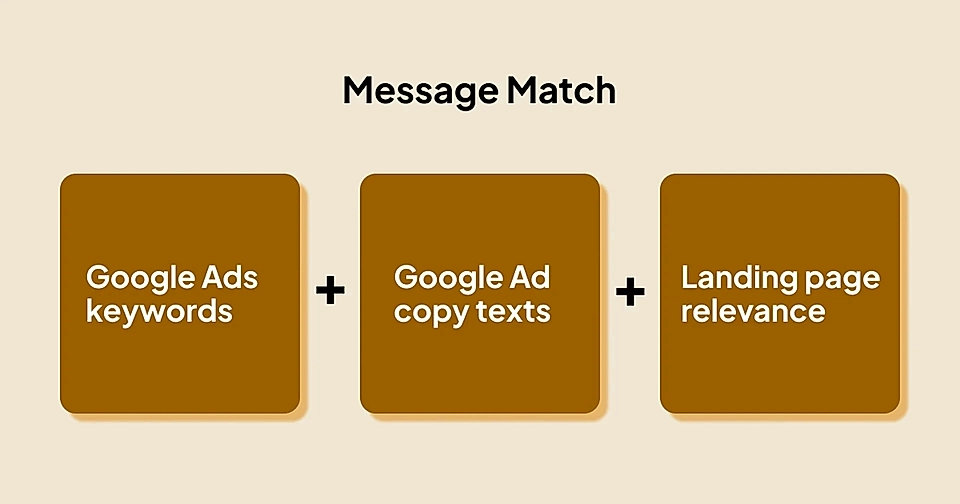
Message match tells how well your ad copy and landing page answer the user’s search phrase in Google.
Intuitively, you’d say it’s common sense to ensure a great match – who would want to lead users to a bad match?
Shockingly, only 35% of advertisers get it right.
The reasons why more than half of ads and their message matches fail are easy to list:
- Google Ads setup is not optimal.
- Copywriting skills need improvement.
- There aren’t enough landing pages to choose from or resources to create new ones.
With a small tweak to Google Ads keywords and changing from the exact match to phrase or broad match, you might direct users to the worst possible page.
Or what would you say about a Google search term “mind mapping tool” leading to a project management tool’s pricing page?
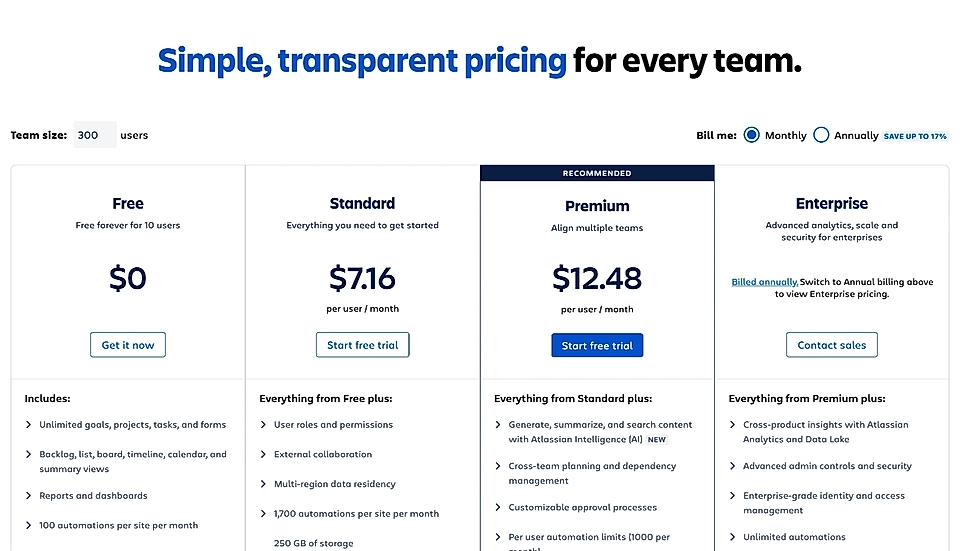
The perfect message match looks very different.
For example, Elfsight’s ad copy for the search term “embed social media feed on website” says: “Add Social Media Feed Widget”.

The ad links to a Elfsight’s landing page where the title and product image match the expectations perfectly.

If your message match is not perfect yet, here are a few tips on how to quickly improve it:
- Divide your ads and keywords into smaller groups. I’d recommend 5-10 keywords per ad group.
- Use exact matches at the start to get a feel of the search volumes. If you experience very low volumes, consider testing the phrase and broad matches to see what type of search traffic Google drives. However, if you do that, monitor the quality of search terms very closely.
- Make sure the ad copy texts match the search phrases accurately. Here, a small number of keywords per ad group and using the exact match keywords help.
- Use a PPC landing page builder to create a targeted page for each ad and ad group.
If you are looking for more help with message match, get in touch with us via LinkedIn.
2. Craft an actionable hero copy to tell what your SaaS does and why it matters
In everyday life, the first impression counts. However, if you are meeting someone who your friend recommended or you already know the person, you won’t be as sensitive as you’d be when meeting a stranger.
The same applies to PPC landing pages. However, your page most likely talks to a stranger – unless your SaaS is very well-known or the lead has already visited your other pages.
And that’s when the copy of the SaaS website hero section really matters.
If the hero texts are confusing and don’t feel right, the lead won’t respond well to your message and won’t continue scrolling. Instead, they’ll hit the back button.
The perfect hero copy text answers these questions:
- Who’s this SaaS product for?
- What problem does it solve, and what’s the outcome?
- Why does it matter, and what’s in it for the user?
Let’s look at that through a perfect SaaS copywriting example.
On Scoro’s ad landing page, the main title, “Protect your bottom line with efficient project management”, instantly communicates the what and why.
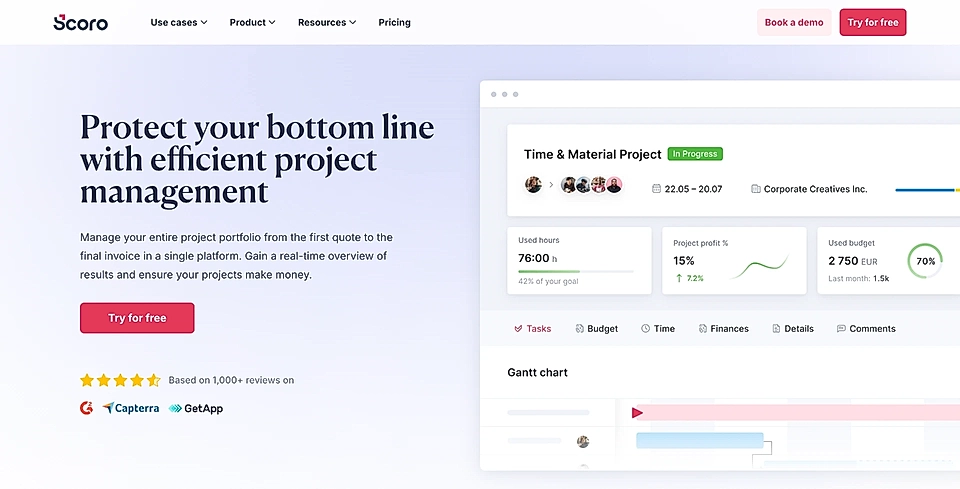
The description, “Manage your entire project portfolio from the first quote to the final invoice in a single platform. Gain a real-time overview of results and ensure your projects make money.”, clarifies what Scoro’s solution to project management is and what outcomes you get.
3. Use visuals in hero to show your product in action
If copy texts are important, so are the mages and videos in your hero section.
Just like the message match between the search phrase, ad copy text, and website hero’s copy, the images and videos need to match with what your SaaS does and why it matters.
I bet you agree with me when you take a look at these two opposite PPC landing page examples.
A search term “lead generation software” and a Google ad led me to this hero section.
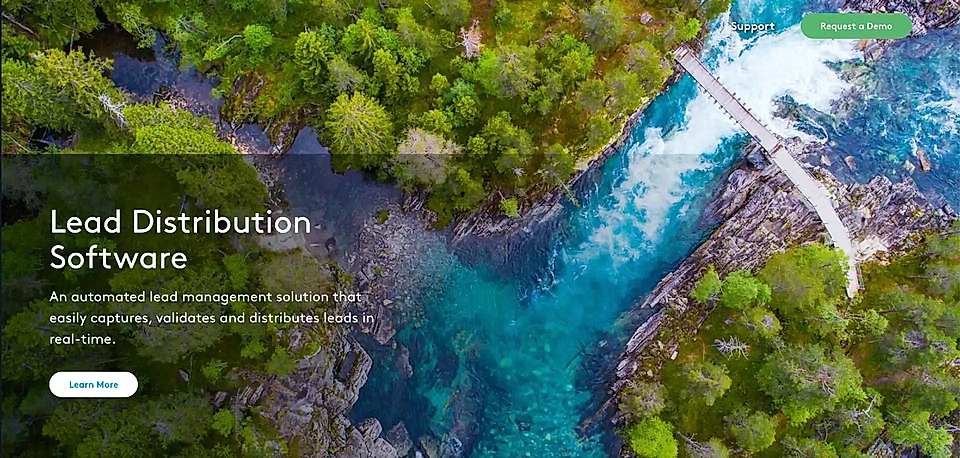
I don’t have words to describe the confusion inside me – shall we just move on to the perfect example?
One of the best examples is found on Geckoboard’s homepage. The hero title and description tell what you get (KPI dashboard) and why you should sign up (improve team performance).
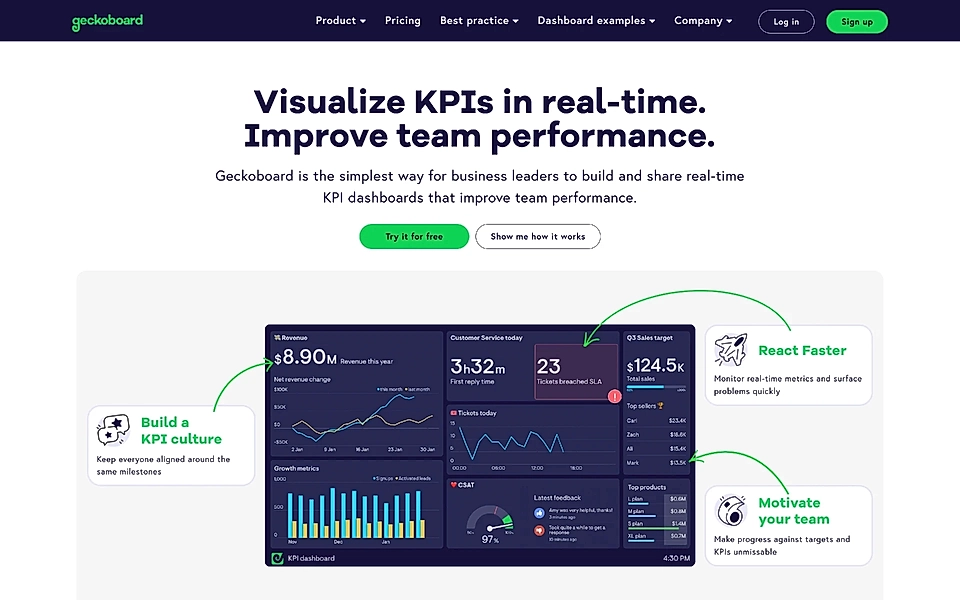
The image just below the hero not only shows the dashboard in action but also explains how you get those improvements.
4. Build an optimal landing page structure with the PAS or AIDA copywriting formula
While what you say on a landing page really matters, the page structure might ruin it almost completely.
Page visitors have a short attention span, and if you try to include too many value propositions on one page, they will quickly get confused.
There’s an easy fix: use a proven copywriting formula like PAS or AIDA to guide your landing page structure.
Let’s see what those acronyms mean and landing page templates look like.
PAS formula
PAS stands for problem, agitation, and solution. As you might guess (or already use elsewhere), the idea is to introduce a problem your customer faces, agitate it, and introduce the secret sauce (your SaaS) to solve it.
Here’s what a PPC landing page template using the PAS formula could look like.
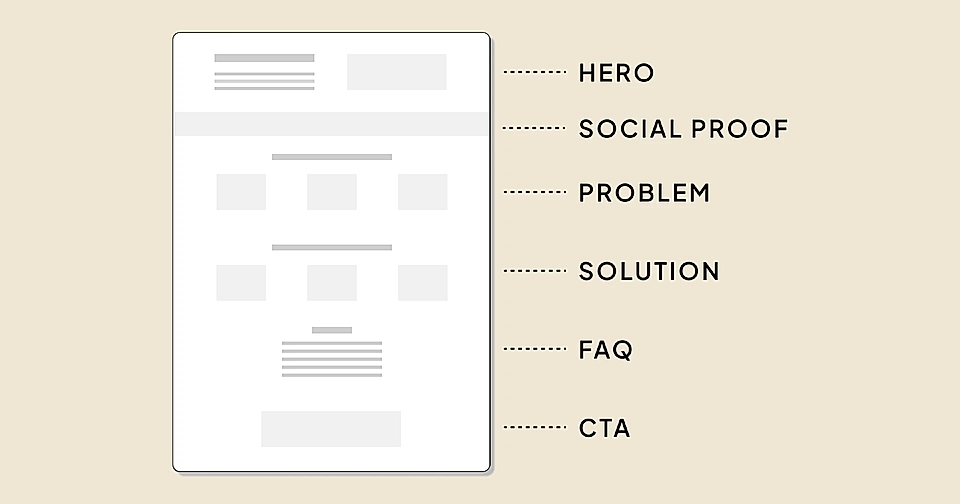
I love the PAS formula because it forces me to focus on the problem and make sure the page visitor feels that we really get their pain and desperation.
You can have a dedicated section for the problem and solution - just like Lemlist’s landing page, where each problem presented straight after the hero element is answered with perfectly matching solutions.

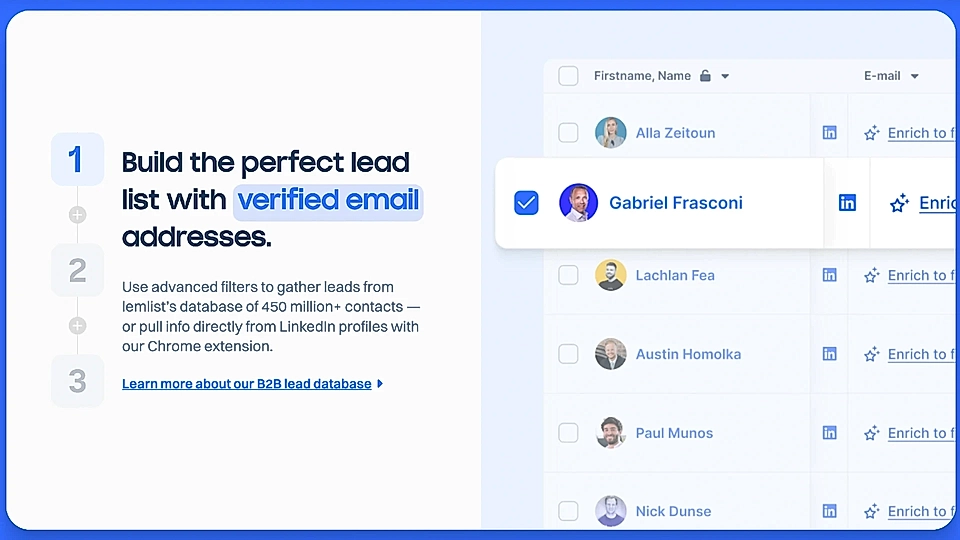
However, you can also use "the old way vs the new way" to communicate all in one element. Here’s how Personio, an HR software, is doing it.

AIDA formula
AIDA copywriting is used everywhere in marketing. It stands for attention, interest, desire, and action.
Here’s what a SaaS landing page using the AIDA formula might look like.
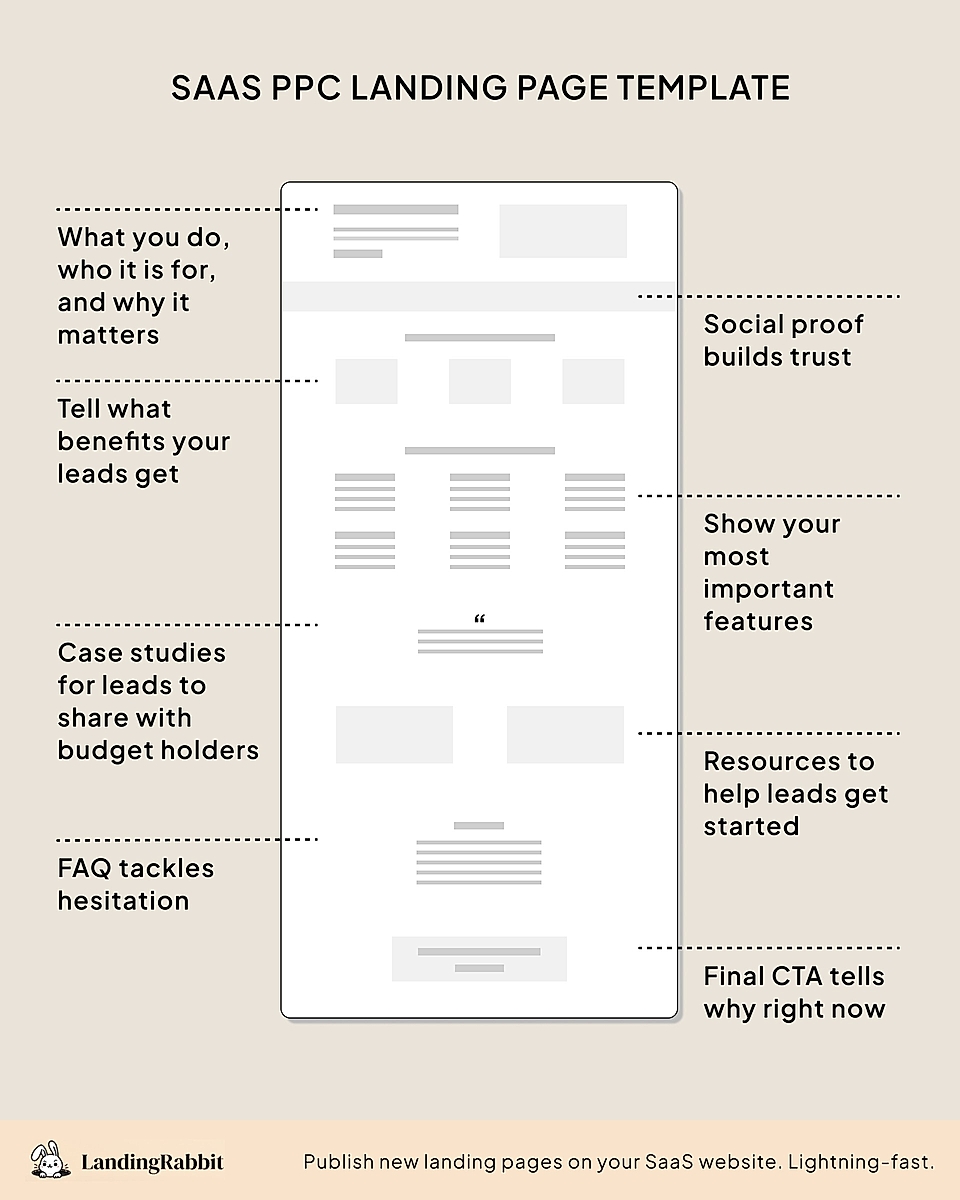
Instead of the problem and solution elements:
- The hero section with social proof raises the attention.
- The benefits and outcomes build the interest.
- Features showing a realistic pathway to those outcomes increase the desire.
- Case studies and resources drive the action.
We have already looked at the hero element, so let’s focus on benefits, features, and case studies.
With the AIDA-inspired page layout, the benefits are logically placed straight after the hero – just like on Elfsight’s PPC landing page.

Zoom has taken a different approach, and benefits and outcomes are cleverly shown as stats.

When discussing your features, you can make them sound like benefits and actionable. Instead of saying, “We support over 15 payment methods”, you can say, “Give your customers 15+ ways to pay”.
BoldDesk’s actionable description texts are a fantastic example of turning the product features section into something that almost sounds like a benefits section.
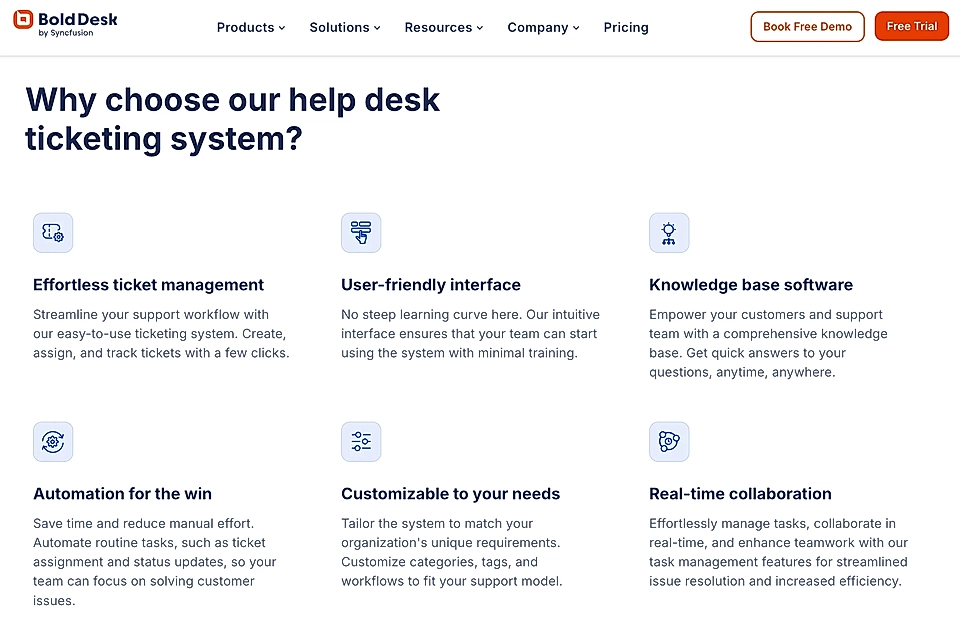
Typeform’s beautiful Google Ads landing page uses the same concept with titles like “Get form takers to share more”, followed by the feature description.
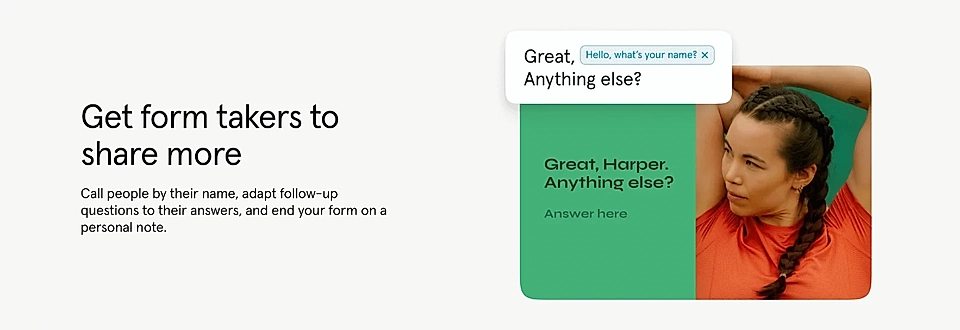
For case studies, a simple layout like the one on Mapp’s landing page never fails.
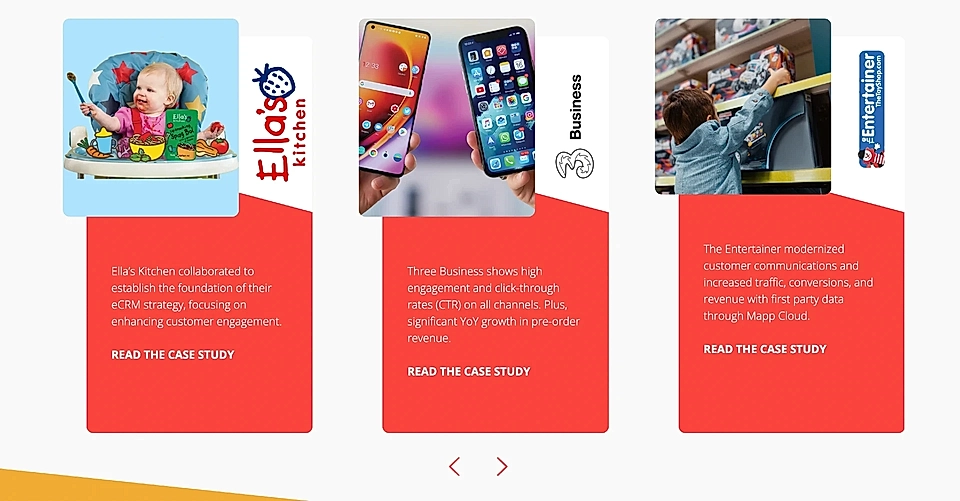
However, case studies and quotes presented on Zoho’s landing page have a striking design, and the authentic customer images truly build trust.
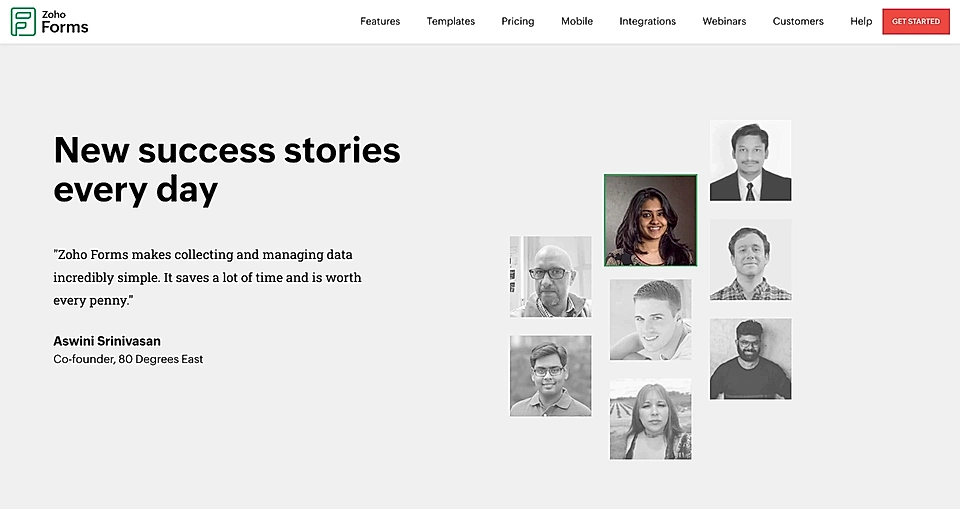
Would you like to create a landing page using the PAS or AIDA formula? Sign up for our 14-day free trial to create your own landing page.
5. Add social proof to build credibility and convince users
When companies launch new consumer products, for example, new soda flavours, you might get a free can at the supermarket or somewhere in town. You don’t stop and ask who else is drinking this.
However, in SaaS marketing, social proof is often crucial to even get someone to test your product. Using the product successfully might require colleagues to enter their details – or the SaaS might access your customer data. And most likely, buying the product will cost you a bit more than the next soda can.
Those all will raise the bar for sign up, and that’s why 80% of SaaS landing pages show social proof to tackle hesitation.
There are countless ways to add social proof to a SaaS landing page. The most typical way is to show logos below the hero element.
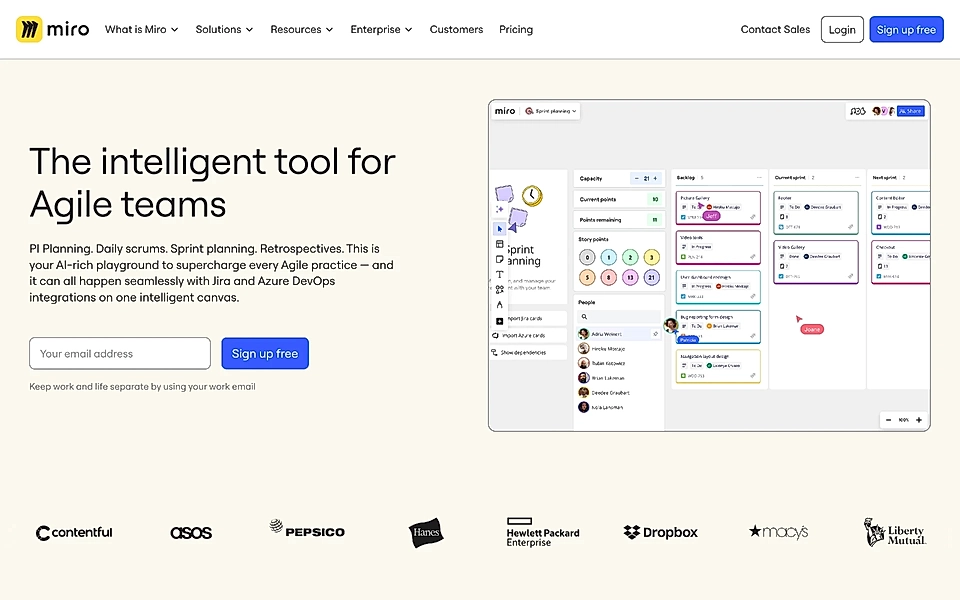
If you want to make that a touch more powerful, do it like Scoro’s landing page and show quotes from your customers.

Also, using third-party review platforms like G2 is a great way of sourcing social proof and making it visible inside and outside your website. What I really like about this element on BoldDesk’s PPC landing page are the titles summarizing the key benefits and the transparent review rating (4.6).
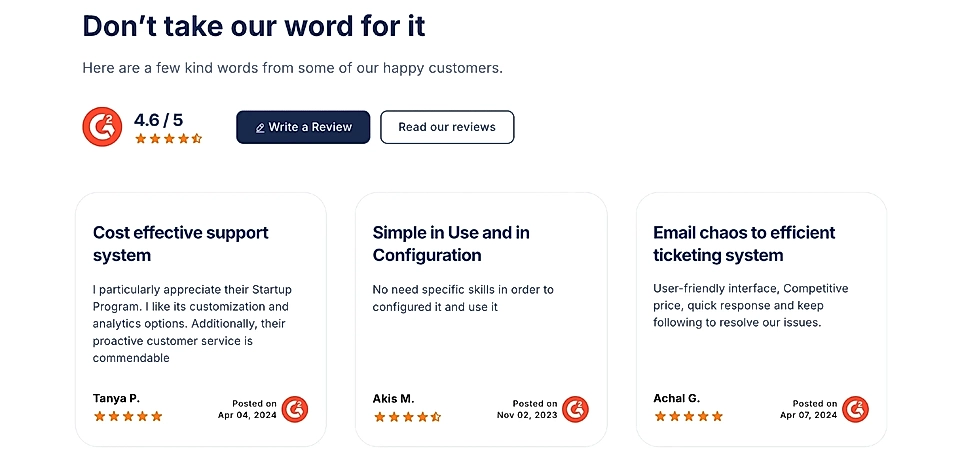
6. Finish with a CTA element to reinforce benefits and tell why to act now
A CTA element at the bottom of the page is your last chance to communicate:
- What’s the outcome your leads get (and what they are missing out).
- Why they should sign up now.
What you don’t want to do is to have something generic like “Let’s start automating”.

Instead, the best B2B SaaS websites include the key outcome, such as "be 10x faster" seen on Focal’s landing page.
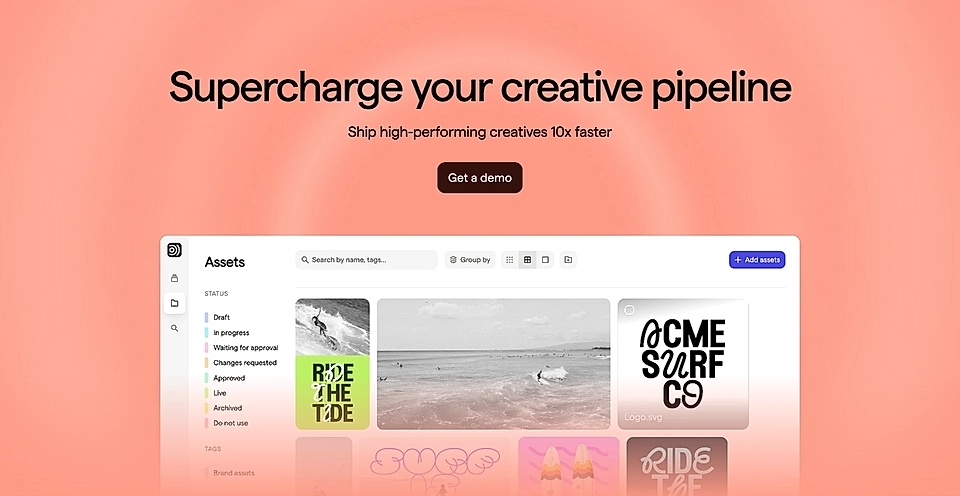
If you are asking people to book a demo and pick a slot from your calendar, conversion rates are typically much lower than for free trial sign ups.
To lower the barrier, you can follow Personio’s landing page example and clearly communicate what to expect from the demo call.
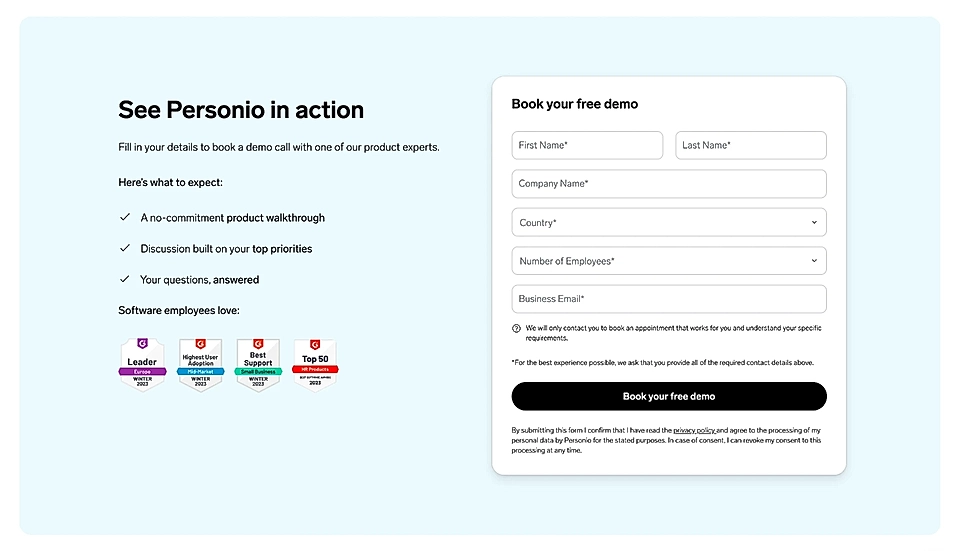
Also, adding some social proof like a quote or third-party review platform badges will increase conversions dramatically.
Are you struggling with PPC landing page copywriting and getting pages done for your SaaS? With LandingRabbit, SaaS teams plan high-performing pages in minutes. Sign up for our 14-day free trial to plan and publish SaaS landing pages without the back-and-forth.